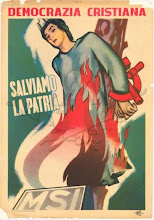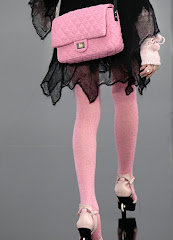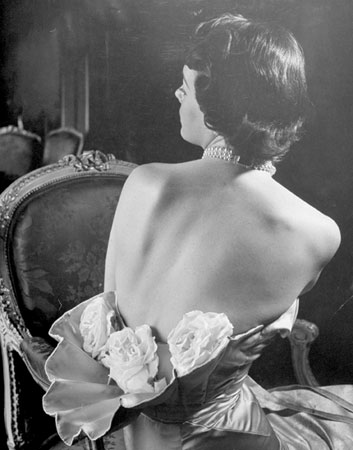Something about the Family

The printing of the authorized Roman Catholic books is chiefly in the hands of three publishing houses, Desclée & Cie of Tournai (otherwise known as the Société de St. Jean l'Évangéliste), Pustet of Ratisbon, and the Vatican Press, at Rome, about each of which something should be said.
The brothers Henri and Jules Desclée, who had already built a monastery on their property at Maredsons, Province of Namur, Belgium, founded a printing press in 1882 at Tournai, and under the name Société de St. Jean l'Évangéliste published a series of admirable liturgical works, arranged according to the best liturgical traditions, harmoniously decorated, and technically excellent. They had a part in the musical printing required in the movement for the reestablishment of the liturgical chant, inaugurated largely through the influence of the Benedictines of Solesmes. Their editions served as the basis of the Vatican edition ordered for universal use by Pius X.
In the Desclées' books the principle that the directions are to be printed in red and all else in black is consistently followed, and headings such as "Introit," "Gradual," "Epistle," or "Gospel," are rubricated, as these are in a sense directions Moreover, references to passages in the Old and New Testaments are rubricated, for they are merely guides to the verses quoted and would not be said. For the same reason, apparently, the running headlines describing the contents of the page below appear in red, for they, too, are directions as to the day, hour, or occasion of the service. But for purpose of convenience the headings of each new section on the page are printed in bold black capitals--which, while not absolutely consistent, is convenient for purpose of speedy reference. In these books the "Amen" to prayers is treated as a response--as it actually is--and is preceded by  in red in rubricated editions, and the words of all versicles--short sentences said by the officiant--are preceded by
in red in rubricated editions, and the words of all versicles--short sentences said by the officiant--are preceded by  . In the matter of initials there appears to be no fixed rule, and prayers begin with rubricated initials or black initials, as taste directs. I think this is a mistake. Strictly speaking, prayers should have initials in black, for these initials are part of a word to be said, and, moreover, black initials have a better typographical effect. Rubrics in these books have initials in black, which I think also open to exception, for rubrics, except in rare instances, require no initials; but if used, such initials should be rubricated also. A more serious fault is the introduction of gothic initials in prayers printed in roman type. As a whole, however, these books are consistent and careful pieces of typography.
. In the matter of initials there appears to be no fixed rule, and prayers begin with rubricated initials or black initials, as taste directs. I think this is a mistake. Strictly speaking, prayers should have initials in black, for these initials are part of a word to be said, and, moreover, black initials have a better typographical effect. Rubrics in these books have initials in black, which I think also open to exception, for rubrics, except in rare instances, require no initials; but if used, such initials should be rubricated also. A more serious fault is the introduction of gothic initials in prayers printed in roman type. As a whole, however, these books are consistent and careful pieces of typography.
The Pustet family was of Bavarian origin. In the first quarter of the last century Friedrich Pustet, who had been a bookseller, started a printing house at Passau which four years later, in 1826, he transferred to its present location at Ratisbon. Enlarging the establishment and adding a paper mill to the plant, the firm began to print and issue liturgical books in 1845, and later added facilities for the printing of church music. In 1870 the Pustet house was given the style of Typographus S. R. Congregationis, and the Vatican authorities have placed in its hands the editio typica of all liturgical work. The best books issued by Pustet are excellent, but their product is uneven and they have been less fortunate in their decorations than the Desclées, whose books show a greater uniform excellence. A disagreeable feature is the use of colored lithographic frontispieces and pictures, and a later series of these, intended to be more modern in feeling than those they supersede, are no improvement on them. "In the latest Pustet Missal," writes a correspondent learned in these matters, [5] "the incipit letter of the text itself is often in color, usually red. Another characteristic is the introduction into the Canon of certain parts of the varying Communicantes and Hancigitur prayers, to obviate turning the page at that important moment of the service. In general, this new Pustet Missal pays attention to the pagination of the prayers."
The Vatican Press (Tipografia Vaticana), founded by Pope Sixtus V in 1587, was housed in the palace in the building known as the Cortile della Stamperia and an interesting "specimen" of its types and characters for musical notation--Indice de Caratteri, . . . esistenti nella Stampa Vaticana, & Camerale--was published in 1628. Shortly afterward, the Congregation of the Propaganda established a separate printing office for the needs of missions, in which connection it issued, during the seventeenth century, a series of grammar-specimens of its various exotic alphabets, the first of which, Alphabetum Ibericum, appeared in 1629. This press later developed into the Tipografia Polyglotta. In 1910, Pope Pius X effected an amalgamation of the two, under the name Tipografia Polyglotta Vaticana, and arranged a modern and finely equipped plant. The new office prints the usual output of the Curia, especially the Acta Apostolicae Sedis, as well as the special choral editions of the liturgical chant, and the typical editions of the missal, breviary, ritual, and other service books.
The Vatican editions of plain song printed in one color, italic being used for the rubrics, are practical, workmanlike, and handsome; they are well adapted for what they are meant for. "The typical editions of the Vatican Press have the custom of printing the top of the page in red for the title--for example, Praefatio solemnis in festo Sancti Josephi, but using black for this same title as a heading for the actual preface itself. Furthermore, in the actual directions, when a text is referred to by name, the text itself is printed in black. For example, 'Dicto Pater Noster et Credo,' the underlined words are in black, the others in red"--precisely the use in rubricated English prayer books. To persons wishing to consult authoritative Roman Catholic liturgical books, the Desclées' publications will serve the purpose best. The books to be looked at are the Missal, Breviary (in four volumes for the four seasons), Rituale, and Officium Majoris Hebdomadae (Offices for Holy Week).

 in red in rubricated editions, and the words of all versicles--short sentences said by the officiant--are preceded by
in red in rubricated editions, and the words of all versicles--short sentences said by the officiant--are preceded by  . In the matter of initials there appears to be no fixed rule, and prayers begin with rubricated initials or black initials, as taste directs. I think this is a mistake. Strictly speaking, prayers should have initials in black, for these initials are part of a word to be said, and, moreover, black initials have a better typographical effect. Rubrics in these books have initials in black, which I think also open to exception, for rubrics, except in rare instances, require no initials; but if used, such initials should be rubricated also. A more serious fault is the introduction of gothic initials in prayers printed in roman type. As a whole, however, these books are consistent and careful pieces of typography.
. In the matter of initials there appears to be no fixed rule, and prayers begin with rubricated initials or black initials, as taste directs. I think this is a mistake. Strictly speaking, prayers should have initials in black, for these initials are part of a word to be said, and, moreover, black initials have a better typographical effect. Rubrics in these books have initials in black, which I think also open to exception, for rubrics, except in rare instances, require no initials; but if used, such initials should be rubricated also. A more serious fault is the introduction of gothic initials in prayers printed in roman type. As a whole, however, these books are consistent and careful pieces of typography. 


















